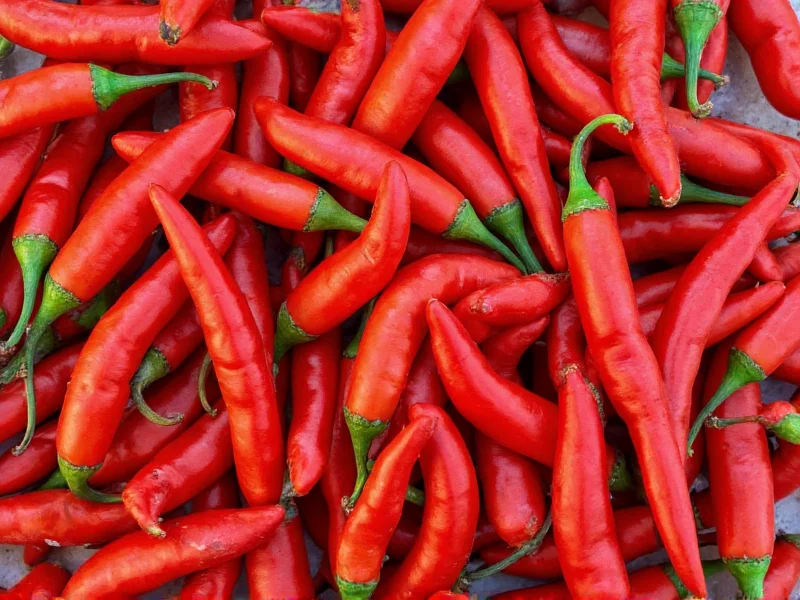Serrano peppers rank among the most popular hot peppers in Mexican cuisine, prized for their clean, vegetal flavor and reliable heat. Understanding their spiciness level helps home cooks and chefs incorporate them effectively without overwhelming dishes. Unlike some peppers whose heat varies wildly, serranos maintain consistent spiciness within their established range, though factors like growing conditions and maturity can influence their final heat level.
Understanding Serrano Pepper Heat
The Scoville scale measures chili pepper heat by determining capsaicin concentration—the compound responsible for spiciness. Serranos sit firmly in the medium-hot category, making them versatile for various culinary applications. When comparing serrano pepper heat level Scoville measurements to other common varieties, they consistently outpace jalapeños while remaining accessible to most palates.
| Pepper Variety | Scoville Heat Units | Heat Comparison to Serrano |
|---|---|---|
| Serrano | 10,000-23,000 SHU | Baseline |
| Jalapeño | 2,500-8,000 SHU | 2-4x milder |
| Cayenne | 30,000-50,000 SHU | 2-3x hotter |
| Habanero | 100,000-350,000 SHU | 5-15x hotter |
| Thai Bird's Eye | 50,000-100,000 SHU | 3-8x hotter |
Factors That Influence Serrano Heat Levels
Several elements affect how spicy serranos become:
- Maturity: Green serranos are milder; red, orange, or yellow varieties (fully mature) pack more heat
- Growing conditions: Stress from less water or nutrient-deficient soil increases capsaicin production
- Part of the pepper: Seeds and white membranes contain the highest capsaicin concentration
- Cultivar differences: Some varieties like 'Tampiqueño' run milder than standard serranos
When determining are serrano peppers hotter than jalapeños, the answer is consistently yes—typically by a factor of 2-4 times. This makes serranos excellent when you need more pronounced heat without venturing into extreme territory. Their thinner walls compared to jalapeños also means more pepper flesh per unit, concentrating the heat experience.
Culinary Applications of Serrano Peppers
Serranos shine in applications where clean heat matters more than subtle flavor notes. Their crisp texture holds up well in fresh preparations. Consider these usage tips when working with how hot are serrano peppers compared to jalapeños in your cooking:
- Raw applications: Finely dice for pico de gallo, fresh guacamole, or cocktail sauces where immediate heat is desired
- Cooked dishes: Add to soups, stews, and braises early to distribute heat evenly throughout the dish
- Vinegar infusions: Create versatile hot sauces by steeping serranos in vinegar with garlic and spices
- Garnishes: Slice into thin rings for tacos, enchiladas, or grilled meats for visual appeal and controlled heat
Professional chefs often prefer serranos over jalapeños when serrano pepper uses in cooking demand consistent, pronounced heat without the jalapeño's sometimes variable performance. Their narrow shape makes them easy to slice uniformly, ensuring even heat distribution in dishes.
Safe Handling Practices for Serrano Peppers
Working with how to handle serrano peppers safely requires precautions due to their significant capsaicin content:
- Always wear disposable gloves when handling, especially when removing seeds/membranes
- Avoid touching your face—capsaicin can transfer to eyes causing severe irritation
- Wash hands thoroughly with soap and water after handling, even when wearing gloves
- Use separate cutting boards for hot peppers to prevent cross-contamination
- If skin irritation occurs, apply milk or yogurt (capsaicin is fat-soluble) rather than water
When exploring what do serrano peppers taste like, note their distinctive bright, grassy flavor with citrus undertones that complements their heat. Unlike some hotter peppers that sacrifice flavor for burn, serranos deliver balanced heat with noticeable vegetal notes that enhance rather than overwhelm dishes.
When to Choose Serranos Over Other Peppers
Select serranos when your recipe requires:
- More heat than jalapeños but less than cayenne or habaneros
- Clean, immediate heat without smokiness (unlike chipotles)
- Peppers that maintain texture when cooked briefly
- A traditional ingredient in Mexican salsas verdes and pico de gallo
For those wondering are serrano peppers hotter than jalapeños in practical cooking scenarios, the difference becomes apparent when substituting one for the other. Replace one jalapeño with half a serrano to maintain similar heat levels, then adjust to taste. This substitution knowledge proves invaluable when following recipes that don't specify pepper varieties.
Frequently Asked Questions
How much hotter are serranos than jalapeños?
Serranos are typically 2-4 times hotter than jalapeños. While jalapeños range from 2,500-8,000 Scoville units, serranos measure 10,000-23,000 SHU. This means even the mildest serrano exceeds the hottest jalapeño.
Can I substitute serranos for jalapeños in recipes?
Yes, but use half the amount of serranos compared to jalapeños. For example, if a recipe calls for one jalapeño, start with half a serrano, then adjust to taste. Remember that serranos have thinner walls and more concentrated heat.
Do cooking methods affect serrano pepper heat?
Yes, cooking concentrates serrano heat initially as water evaporates, but prolonged cooking (over 15 minutes) breaks down capsaicin, gradually reducing perceived heat. Raw serranos deliver immediate, bright heat that mellow slightly when cooked.
Why are some serranos hotter than others?
Heat variation comes from growing conditions (water stress increases capsaicin), maturity (red serranos are hotter than green), and genetics. Peppers from the same plant can vary in heat based on their position on the plant and sun exposure.
How can I reduce serrano pepper heat in a dish?
Add dairy (sour cream, cheese, yogurt), acid (lime juice, vinegar), or sweetness (honey, sugar) to counterbalance heat. Removing seeds/membranes before cooking significantly reduces heat. For immediate relief while eating, bread or rice helps absorb capsaicin better than water.











 浙公网安备
33010002000092号
浙公网安备
33010002000092号 浙B2-20120091-4
浙B2-20120091-4